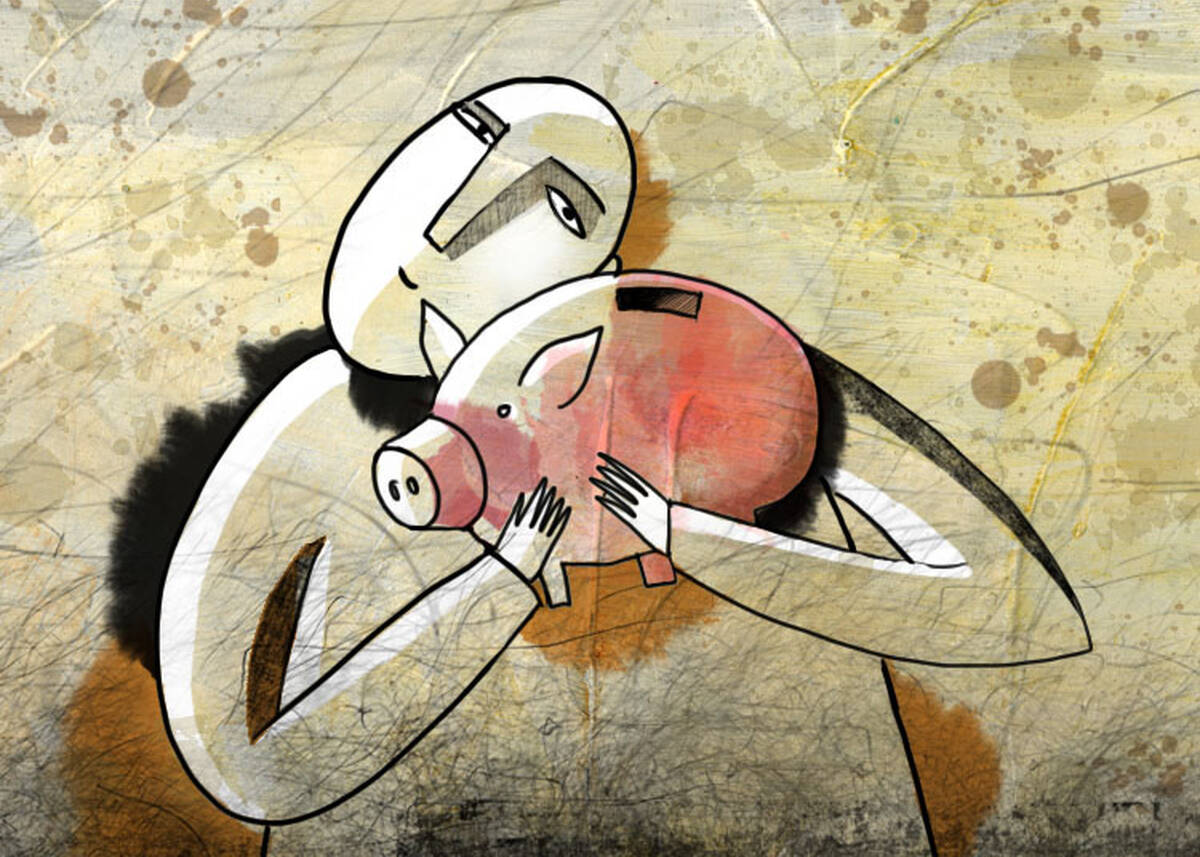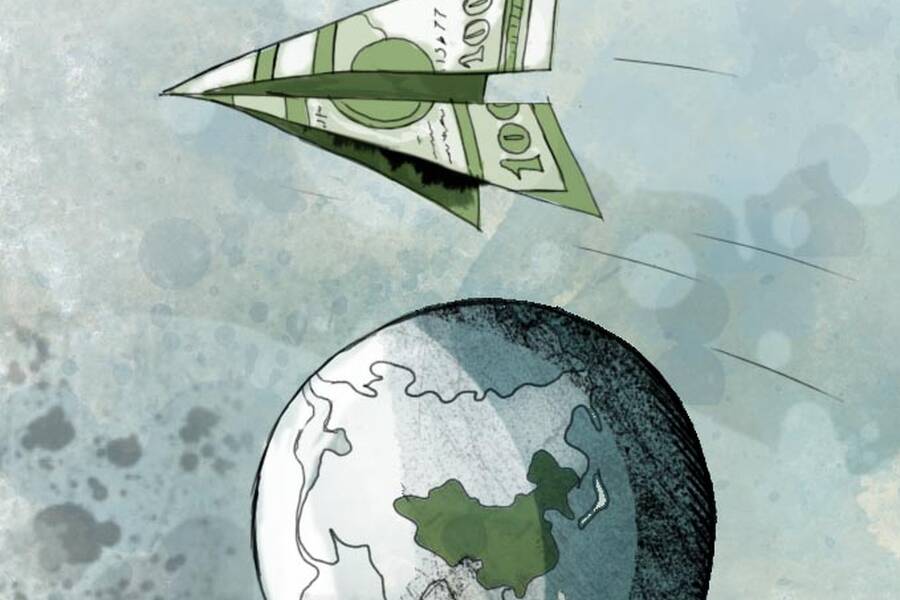Finance & Accounting Policy Dec 1, 2014
Is Your Household Liquid Enough?
Ample cash reserves aid households when faced with the unexpected.

Who is better equipped to deal with getting unexpectedly laid off: a person with a few month’s worth of household cash in the bank or a person with millions in home equity on the books?
On paper, the second individual is “richer” because the figure representing his net worth has more zeroes in it. But the first person is more liquid: she can access her funds much more easily in order to deal with a temporary loss of income. And she may not have to change her spending habits all that much while she recovers from the job loss, either.
This financial logic is familiar to anyone who has ever saved up money “for a rainy day” or maintains an emergency fund in his bank account. But measuring how this microeconomic behavior plays out in the real world, and explaining its mechanisms, can be difficult. In recent research, Scott R. Baker, an assistant professor of finance at the Kellogg School, uses novel data from a leading personal finance website to show how liquidity and credit constraints determine whether a family will suddenly “tighten its belt” or maintain its spending habits in the wake of an income loss.
Small Scale, Big Picture
Global and federal policy concerns dominated headlines during the Great Recession of 2007 and 2008. But Baker was interested in how crisis manifested on the individual household level.
“Economic theories and models often assume that all people behave the same way,” Baker says. “But there are large differences in both the characteristics and the financial well-being of households....When they are subjected to the same shock, they may not respond in the same way. During the recession, we tended to see that some people showed more changes in their consumer-spending patterns than others, and it seemed to be related to the levels of debt they had. I wanted to see if this relationship still holds at a household level, and if credit constraints really were the cause of these changes.”
Differences in spending behavior at the household level are often difficult to quantify, Baker says, because detailed data is hard to come by. “There’s a huge amount of government and private-sector information that has portions of people’s finances, but nothing has it all in one source and linked all together,” he says.
Determining whether income shocks cause changes in spending behavior is even harder. “Let’s say I’m paying for my kid’s college tuition and my wife had taken a part time job to help fund this ongoing expense,” says Baker. “If I know that he’s going to [graduate] in six months, my wife might stop working now in anticipation of the decline in required spending. In the data it’ll look like a drop of income followed by a drop in spending six months later, but the income drop didn’t ‘cause’ the spending drop—that household planned it.”
“If you look at two households with the same level of dollar assets, but one has those assets tied up in their house, and the other has them in a bank account, they’ll respond to a drop in income very differently,” says Baker.
To avoid these problems, Baker obtained access to a database containing detailed (but anonymized) transaction records from 150,000 households between 2008 and 2012, courtesy of a popular consumer-finance website. Baker used direct-deposit records to match families with the companies that employed them, and then connected the effects of so-called “firm shocks” (such as layoff announcements or lower-than-expected earnings reports) with drops in income to the associated households. This let Baker establish that the income drops in his household data (and any associated changes in spending patterns) were driven by unexpected events external to the household. The data also offered detailed snapshots of a household’s balance sheet: its cash flow, liquid assets, investments, and debts.
Caught without an Emergency Fund
Baker used these unusually detailed records to demonstrate that a household’s debt position was “strongly linked” to how much its spending patterns changed in the wake of an income fluctuation. The more indebted the household, the larger the change: highly “leveraged” families shrank their spending by 25% compared to their more-liquid counterparts. But while some economic theories often cite reasons like rule-of-thumb accounting or greater uncertainty about future income for this shrinkage—“if a recession hits and I’m worried that something bad will happen to me, I might reduce my spending even though I’m not constrained by my balance sheet,” Baker says—the data showed that the variance in consumption had one primary cause: illiquid assets.
“If you look at two households with the same level of dollar assets, but one has those assets tied up in their house, and the other has them in a bank account, they’ll respond to a drop in income very differently,” Baker explains. “The household that has their savings in illiquid form will have to change their consumption to a greater degree, because it’s harder to access the money they need to cushion the blow to their income.”
Credit and Leverage: A Double-Edged Sword
These major reductions in consumption can amplify the negative effects of a recession already in progress, Baker says. And because of the boom and subsequent crash of consumer credit in the last several decades, “a large amount of households are living pretty close to the edge as far as cash flow,” Baker says.
“Maybe they have a lot of home equity, but they have barely any money in their bank accounts—even at a fairly high level of income. There was a big expansion in the supply of credit in the years leading up to 2007 and 2008, but then a huge number of banks and credit card companies froze all their consumer credit. That left these households exposed to reductions in income, because they didn’t have liquid savings to fall back on.”
Baker says his findings have two clear implications for policy. At the macroeconomic level, given that many households are operating on thin margins, “offering stable access to credit is very important,” he says. “A big expansion in the supply of credit can contribute to a bubble and make a resulting recession much harder to get out of if that expansion of credit suddenly flows away.” Baker adds that his research is consistent with the work of fellow Kellogg School finance professor Janice Eberly, who advocates for automatic mortgage refinancing when interest rates fall, allowing households to redirect spending from fixed debt expenditures to current consumption during recessions.
Meanwhile, individual households should maintain an ample cash reserve in addition to whatever debts, illiquid assets, or leveraged positions they might hold—regardless of how wealthy they are on paper. “There are a lot of rich households that are on a paycheck-to-paycheck lifestyle,” Baker says. “If you have lots of money in your 401K or your house, you may feel like you’re safe, but if you’re forced to tap that, it can be very expensive in terms of paying financial advisors or penalties to the IRS. If you had some extra money in your checking account or savings account, that’d be free to access in an emergency.”
Baker, Scott R. “Debt and the Consumption Response to Household Income Shocks.” Working Paper.



